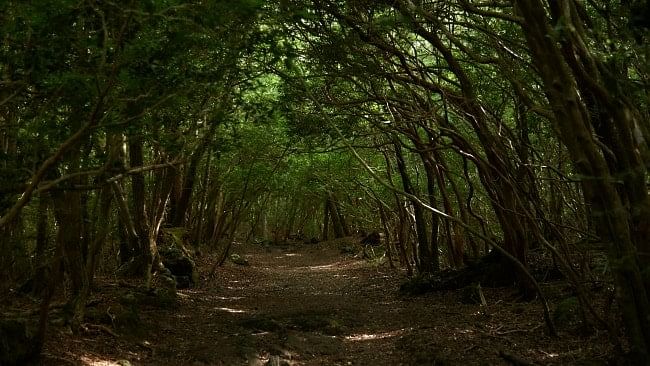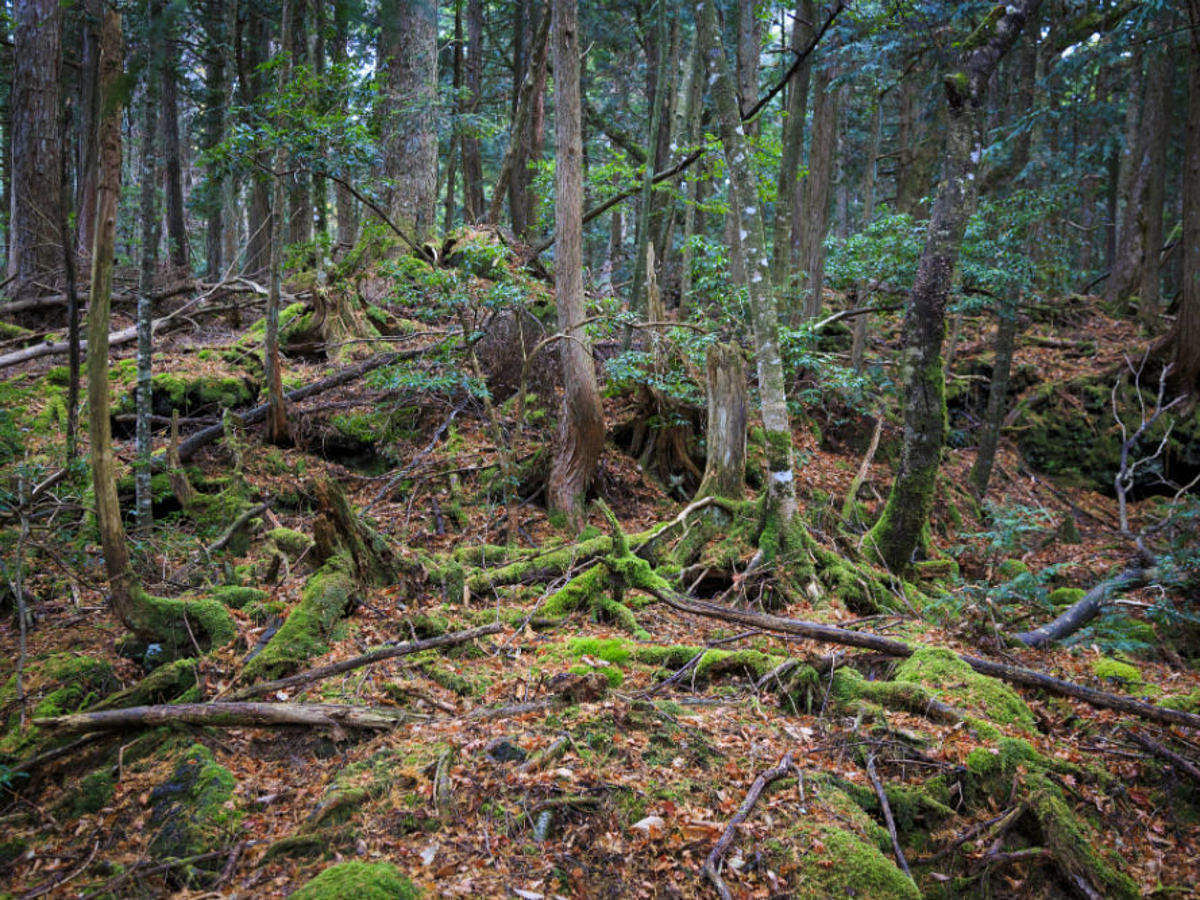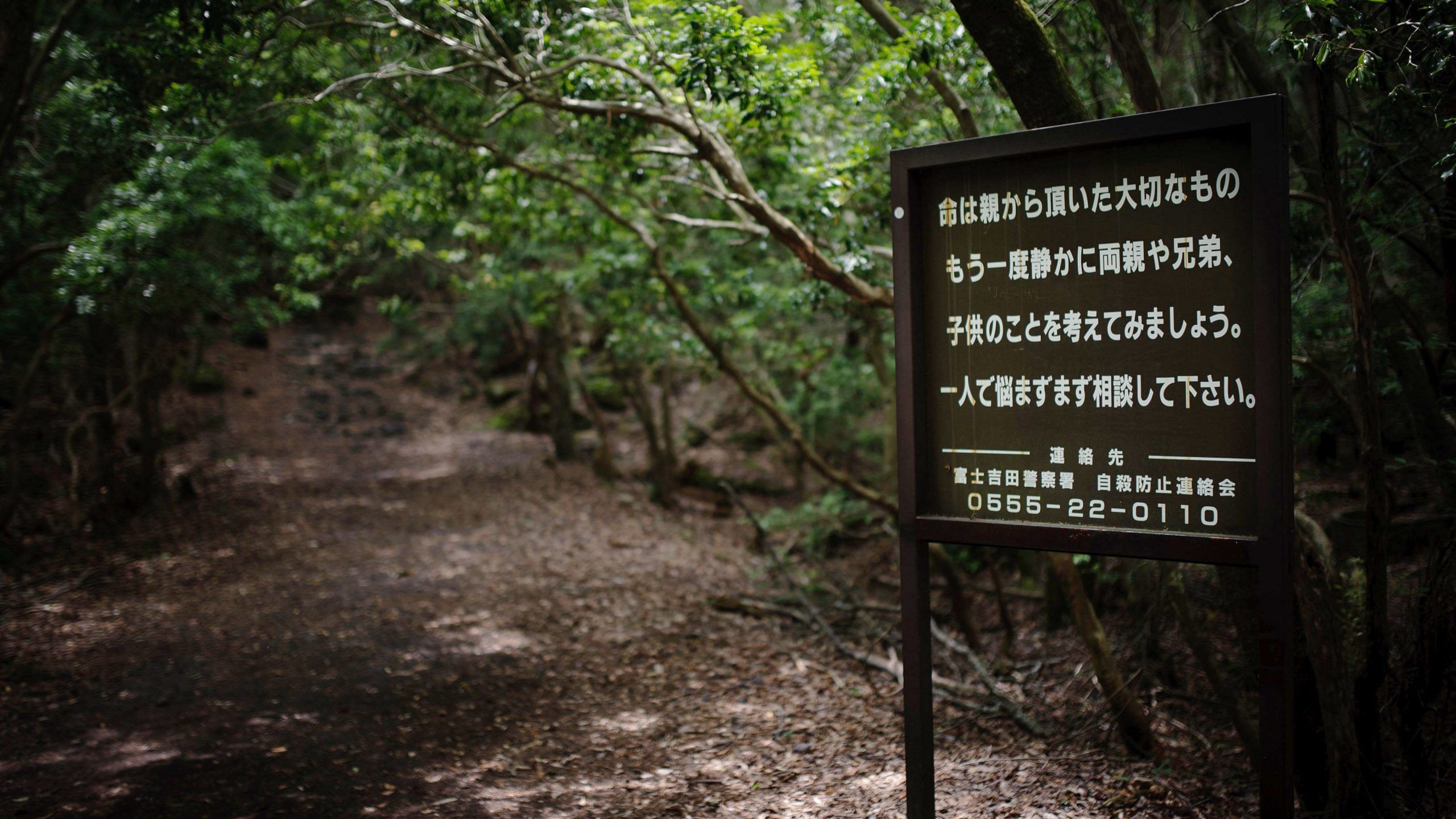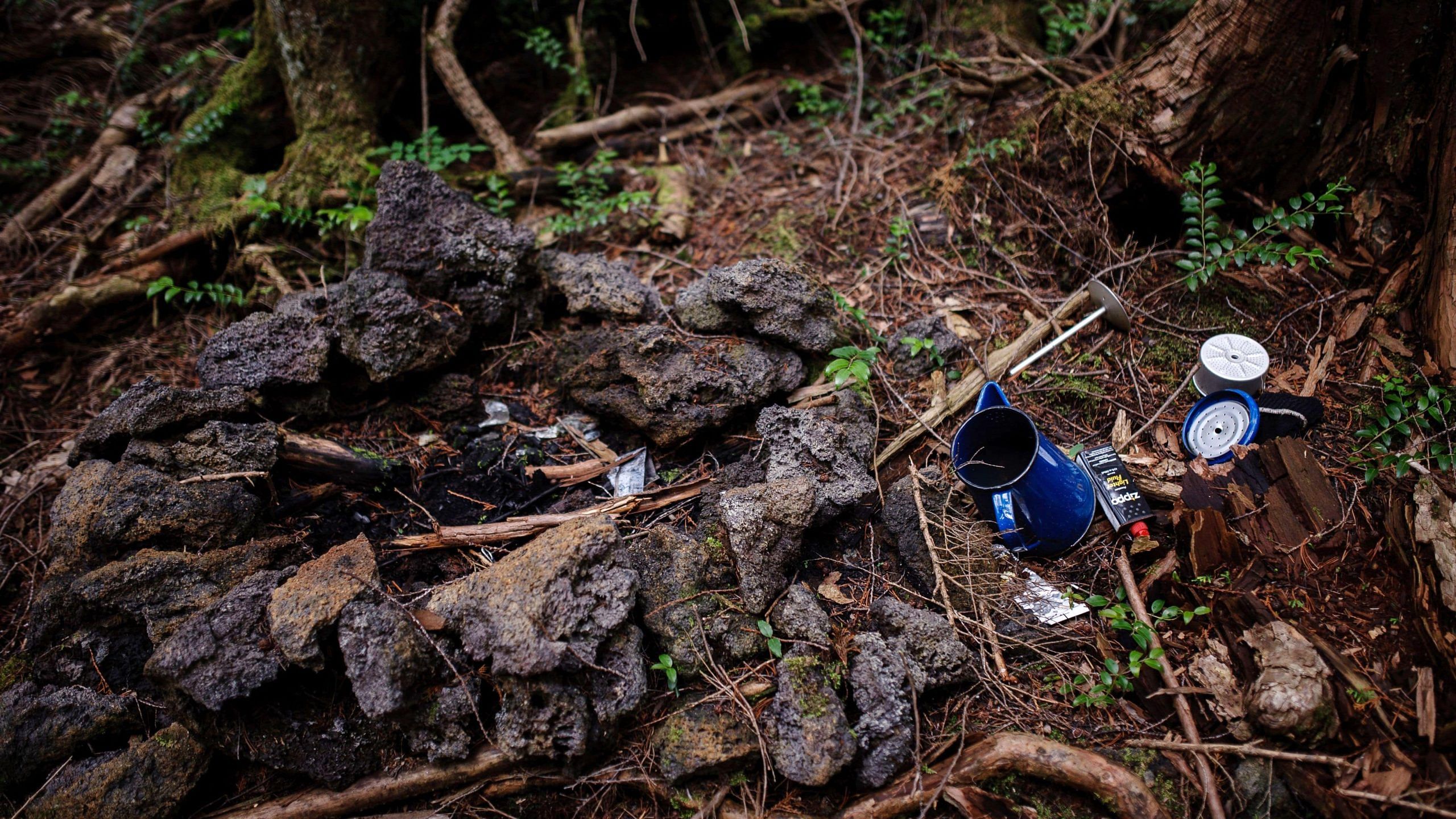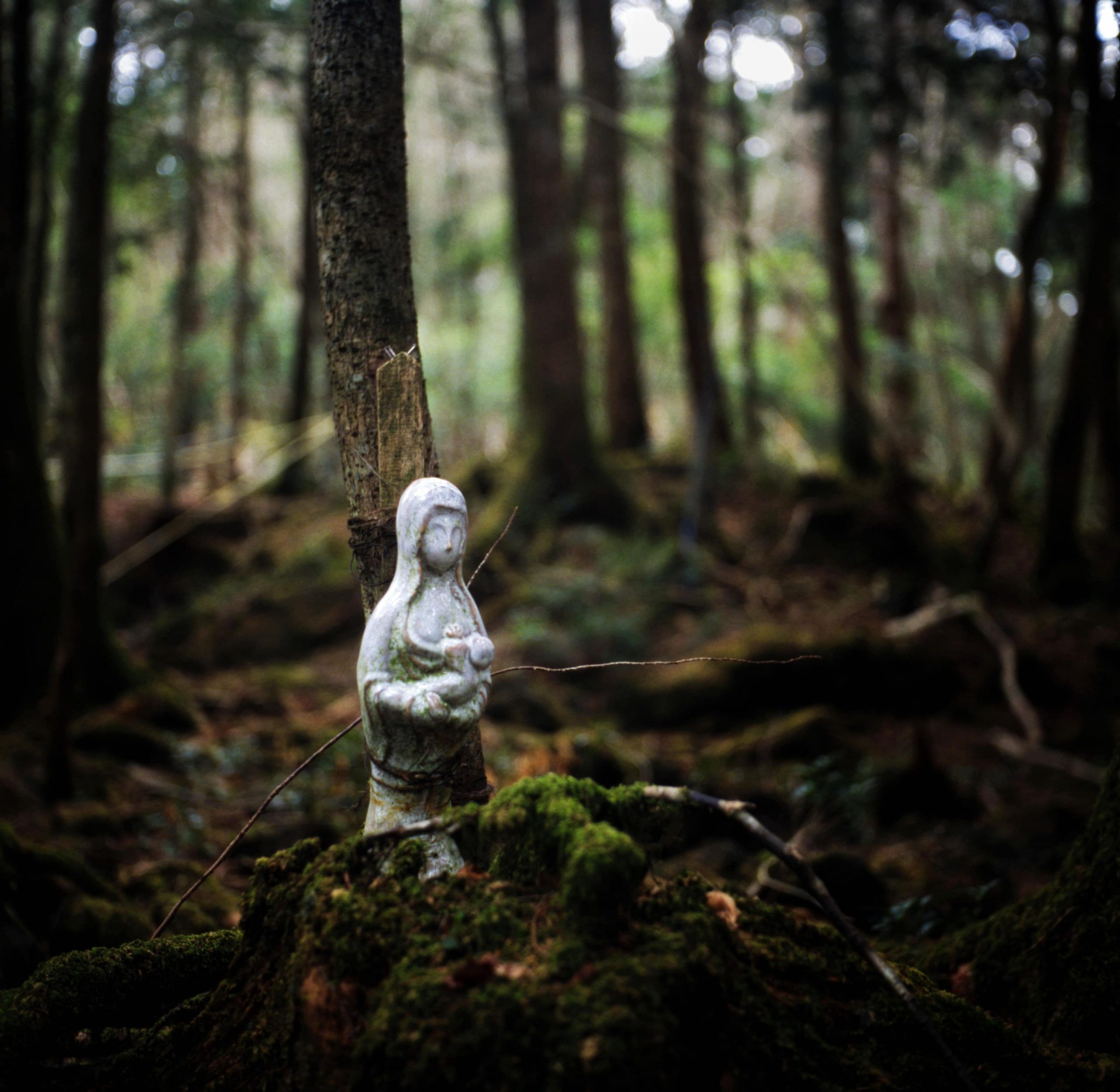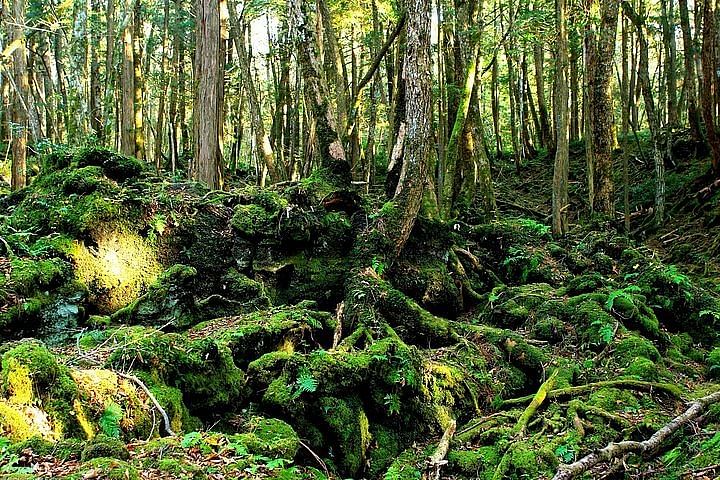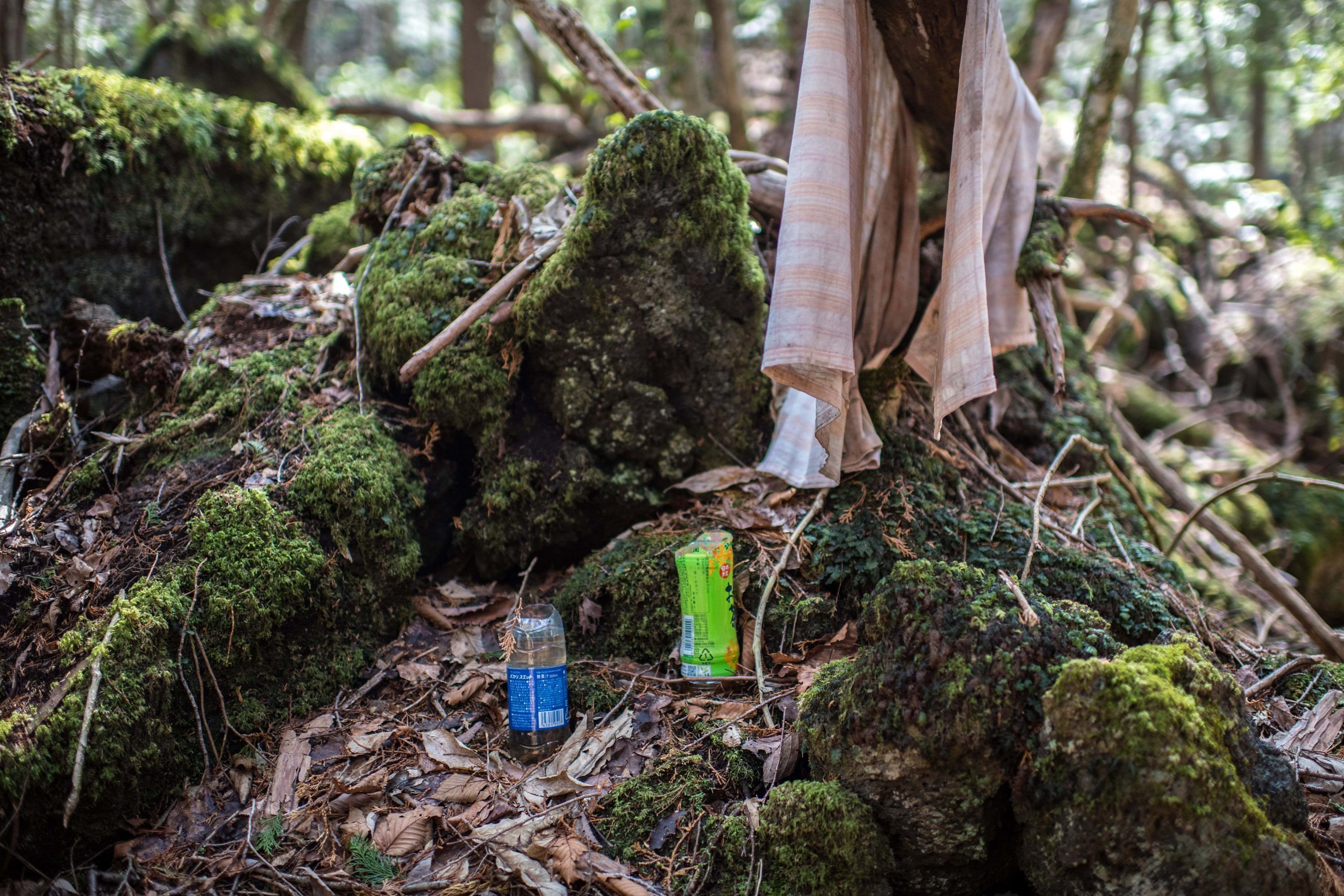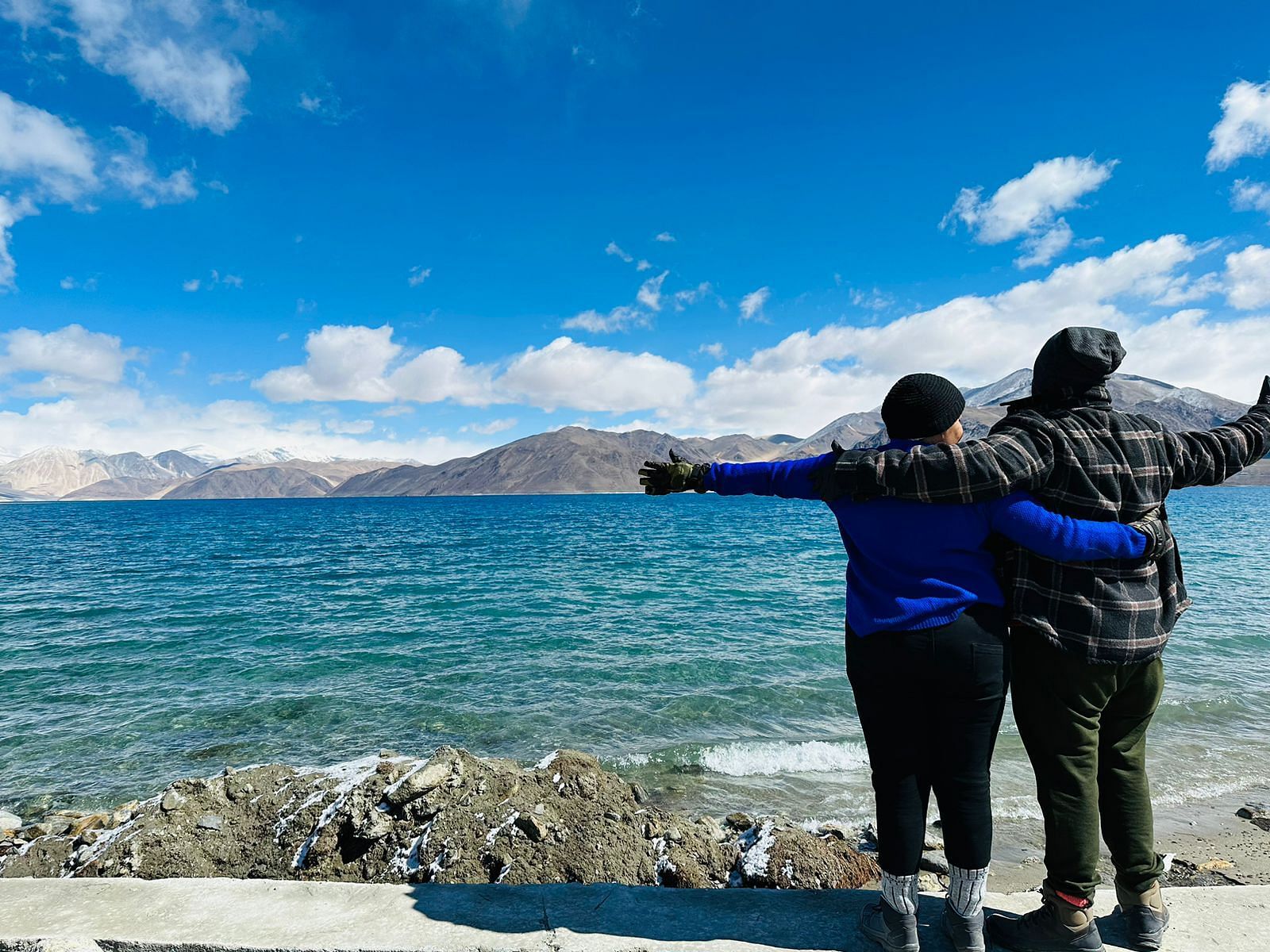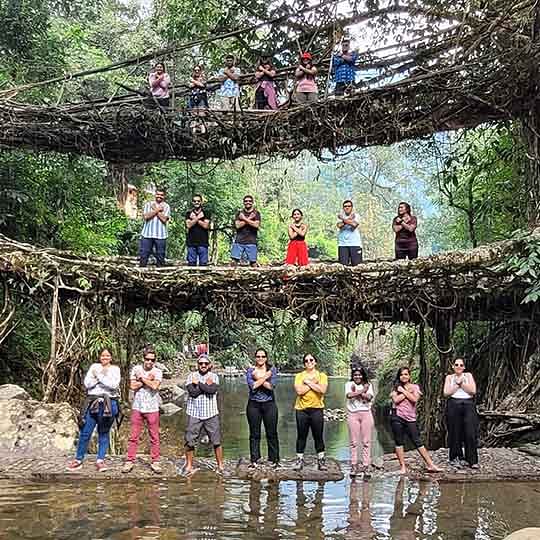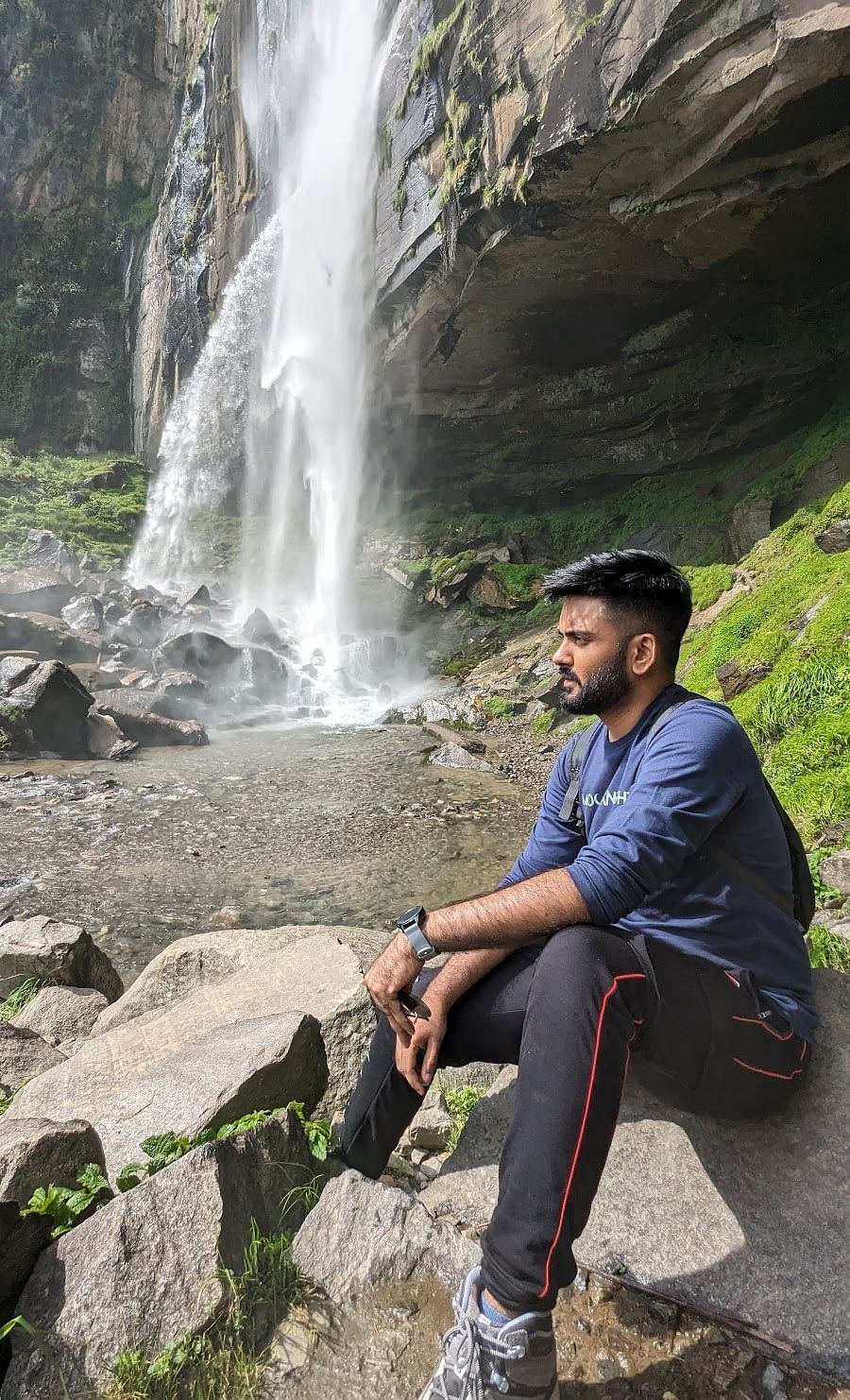There are many popular places worldwide; some are known for their natural beauty, some for tourist attractions, historical monuments or religious sites, etc. But did you know that there is a popular suicide place in Japan? Not just a small place, but there is a whole forest.Yes! Today we will discuss the Suicide Forest of Japan – the Aokigahara Forest. This Forest in Japan ranks 2nd after the Golden Gate Bridge of San Francisco, California as the top place in the world where people commit suicide.
Other Interesting Stories: Dare To ‘Dine With Dead’ At Lucky Restaurant, Ahmedabad
Geography Of Aokigahara – The Suicide Forest Of Japan
The Aokigahara Forest is located on the northwestern side of Mt.Fuji. Nestled in an area of 30 sq km, this dense forest is a part of Mt.Fuji and the 5 Fuji Lakes area. Aokigahara translates to “Blue Tree Meadow” and the foliage of this forest in Japan is so thick that this forest is also known as the “Sea of Trees” or “Jukai” as the Japanese call it. So, getting lost in this forest is quite easy.The Aokigahara Forest is just a 2-hour drive to the west of the capital city of Tokyo. The entire floor of this forest in Japan is made of volcanic rock. In the year 864, Mt.Fuji erupted violently for 6 months and buried several villages around it. This massive area of hardened lava turned into a dense forest over a period of 1000 years now, in the shadow of the snow-capped volcano.
The trees and their roots in this suicide forest of Japan organically twist and turn. The roots cover the forest floor by growing in an entangled manner, creating a wide web-like network. The trees here are so close to each other that sunlight and wind can barely enter this forest.
The overall forest appears like a spooky jungle scene from a horror movie. The pores in the rocks of this suicide forest of Japan absorb the sound waves, which makes this forest a very silent place to spend some peaceful time in the lap of nature.
The uneven rocky terrain of the Aokigahara Forest has several underground caves, which are popular amongst the tourists to explore like the Narusawa Ice Cave, Fugaku Wind Cave and Lake Sai Bat Cave.
The wildlife dwelling in this forest is comparatively sparse, given the forest area and the dense forest cover. Mammals like the Asian Black Bear, small Japanese mole, mice, deer, fox, boar, wild rabbit, Japanese mink, and Japanese squirrel find their home in this suicide forest of Japan. Other birds include willow tit, great spotted woodpecker, bush warbler, Eurasian jay, Japanese and Siberian thrush, oriental turtle dove, etc.
Other Interesting Stories: Jatinga Bird Suicide Mystery: Unsolving Bermuda Triangle Of Birds
Spooky Stories From The Suicide Forest Of Japan
There are various stories associated with when and how the Aokigahara Forest became popular as a Suicide Forest in Japan. One of the most popular and logical stories is related to a certain sect of the Buddhist Monks.Mount Fuji is considered a sacred mountain in Japan and the forest cover surrounding it is naturally a sacred place. For years, some Buddhist monks come to the forest to practice an extreme form of meditation, where they would only eat the leaves and bark of the trees for 1000 years. After 1000 years, they would bury themselves underground or go without eating anything to continue their meditation until death.
The ultimate goal is to transform the body, while still being alive into “Sokushinbutsu”, a type of mummy. To date, 18 bodies of self-mummified monks have been recovered from this forest and are being displayed in various parts of Japan.
Another local legend is associated with a Japanese mythological character named “Yūrei” which means the ghost of the dead. Many Japanese spiritualists believe that this forest is haunted by Yūrei, which lures the visitors of this forest into sad and depressing thoughts, making them commit suicide. The prevalence of several suicides in this forest has resulted in several paranormal activities in the Aokigahara Forest.
There is another story that says that the people who go into the forest never return as all the modern technologies and devices such as compasses and mobile phones stop working in this forest. But there is a scientific reason behind the failure of the compass.
The lava rock upon which the forest is formed has a strong magnetic force, which varies in iron content and strength by location. This causes the compass needle to go haywire, only if kept on the ground. If you carry the compass in hand, it works fine. The same is the reason for the failure of other devices. And the dense forest cover results in the loss of mobile networks. Due to this, many visitors get lost and get killed or eaten by wild animals.
Other Interesting Stories: The Story Of Kodinhi Village, Kerala: The Land Of 400+ Twins
The Shocking Truth Of The Suicide Forest Of Japan
Think carefully about your children and your family. Your life is a precious gift from your parents.” and “Quietly think once more about your parents, siblings, or children. Please don’t suffer alone, and first reach out.” He reads a signboard at the entrance of Aokigaraha Forest.The Suicide Forest of Japan has the negative reputation of being “a perfect place to die” in Japan. This is also associated with the high suicide rates in Japan. There are many reasons why people commit suicide in this forest in Japan. Let’s slowly uncover the truth and mysteries of this suicide forest in Japan.
Many dead bodies found in the Aokigahara forest either die of hanging or drug overdose. The reason for most suicides is bad economic conditions as most suicides in this forest are committed during the end of the fiscal year. When the suicide survivors from this forest were asked why they came to this place, their answers were shocking.
“My will to live disappeared. I’d lost my identity, so I didn’t want to live on this earth. That’s why I went there. You need money to survive”.
“Many people have committed suicide at Aokigahara; thus you won’t die alone”.
“I wanted to die alone without being noticed”.
“I wanted to share the same place with others and belong to the same group”.
These answers were given by the survivors to CNN in 2009.
Many people in Japan associate these suicides with some of the unusual practices and beliefs rooted in Japanese culture and mythologies. Some popular theories are – Ritual Suicide, Ubasuate, and the presence of the Yūrei as mentioned above.
Some Samurai in Japan practiced “Seppuku” – a samurai’s honorable suicide that dates back to the feudal era. This ritual suicide was seen as a way of taking responsibility. While “Ubasute” was another practice followed in Japan during famines. Ubasute translates to “abandoning an old woman.” During the famine, to decrease the number of mouths to feed, often the most elderly member of the family was carried to a remote area like a jungle or mountain and left there to die from dehydration, starvation, or exposure
Many argue that these were never a real tradition, but a product of folklore, potentially connected to the suicide forest of Japan.
Other Interesting Stories: Machli Tigress – Dramatic Life Story Of Queen Of Ranthambore
Actions Taken By The Local Authorities of Aokigaraha Forest
For a long time, the Japanese society viewed suicide as a personal problem, until it was highlighted to the world that Japan has the highest suicide rate in the world. The Japanese government then changed its thoughts and invested in public service messaging about suicide prevention.Since 1970, annual body searches have been carried out in the Aokigaraha Forest by police, volunteers, and journalists and each year the body count kept on increasing. Around 2011, the Japanese government stopped publishing the number of bodies found in the Aokigaraha forest to curb the negative publicity.
Many continuous efforts are being made to decrease the number of suicides in Japan as well as in the Aokigahara forest. There are now trained employees and volunteers to spot the signs of troubled visitors to Aokigahara, and there are security cameras and prominent messages along with helpline numbers posted at the entrance to the park. This really helped in curbing the number of suicides in the forest. According to 2010 data, 54 confirmed suicides were declared out of more than 200 attempts.
Other Interesting Stories: Bullet Baba Temple: Story Of Rajasthan’s Mysterious Bike Temple
Aokigahara has been referenced in various forms of media, spanning anime, manga, films, literature, music, and video games. Shockingly, the research uncovered that some deceased individuals in the forest left behind a chilling book titled “The Complete Manual of Suicide,” which called Aokigahara as “the perfect place to die.” This ominous manual has been discovered among the belongings left behind by visitors to the forest who committed suicide here.In the world of entertainment, Aokigahara has become a haunting backdrop for storytelling. It has inspired movies, such as the suspenseful exploration in “The Forest,”. It also inspired many Japanese poets to write poems and short writings titled “Sea of Trees: Poetic Gateways to Aokigahara”. It has been featured in literature, including novels that delve into the mysterious and eerie aspects of the forest.
In 1960, “Tower of Waves” a popular melodrama by Japanese author Seicho Matsumoto bought this forest “on the map” as this book became very popular back then amidst the young Japanese population.
Anime and manga creators have also drawn inspiration from the haunting allure of Aokigahara, weaving its enigmatic atmosphere into their narratives. Video games, too, have explored the dark allure of this place.
These diverse forms of entertainment not only reflect the grim reality of Aokigahara but also contribute to the broader cultural conversation surrounding this infamous location.
Other Interesting Stories: 3 Balinese Ghost Stories – Unfolding The Spooky Side Of Bali Culture
Tourism in Aokigahara – The Suicide Forest Of Japan
Apart from being popular as a popular suicide place, the Aokigahara Forest houses several hiking trails for a natural retreat. Many who visit the forest, do not have any intention of ending their lives. They simply visit to enjoy breathtaking views of their sacred Mount Fuji from various vantage points that can be reached by hiking.Many adventure lovers venture deep into the forest to enjoy the thrill of cave exploration which are the hidden gems underground in the Aokigahara Forest. Aokigahara, the enigmatic Suicide Forest, invites travelers to explore a blend of haunting history and captivating natural wonders, creating a destination that is both eerie and alluring.
Some Of The Best Places to Visit In Aokigahara Forest
- Ice Cave (Fugaku Wind Cave): Venture into the subterranean depths of Fugaku Wind Cave, where intricate ice formations crystallize from the winds of Mount Fuji. The cave’s chilling beauty offers a unique underground experience.
- Narusawa Ice Cave: Uncover the secrets of Narusawa Ice Cave, a marvel formed by volcanic activity. Intricate ice structures adorn the cave’s interior, creating a surreal environment that showcases the forces of nature.
- Lava Plateau (Narusawa Hyoketsu): Traverse the ancient Narusawa Hyoketsu lava plateau, a testament to the region’s volcanic past. The barren landscape provides panoramic vistas, offering a stark contrast to the lush foliage of Aokigahara.
- Lake Saiko: Find serenity by the shores of Lake Saiko, one of the Fuji Five Lakes. Framed by the forest’s edge, this tranquil lake provides a peaceful escape, allowing visitors to immerse themselves in the natural beauty surrounding Aokigahara.
- Aokigahara’s Sea of Trees: Wander through the hauntingly beautiful Sea of Trees, where the thick canopy creates an otherworldly atmosphere. This unique forest landscape contributes to Aokigahara’s mystique, earning it the moniker “Sea of Trees.
Instructions To Follow While Navigating Through The Suicide Forest in Japan
- Navigate the forest safely by adhering to well-marked paths, ensuring a controlled and secure exploration. Stick on the designated trails.
- Many hikers mark their trail by tying a ribbon around the trees to remember the return path through the dense tree cover.
- Respect posted signs and guidelines to preserve the delicate ecosystem and maintain a harmonious coexistence with nature. Avoid littering the forest.
- Prioritize safety by informing a friend or family member about your hiking plans, including expected return times, to ensure a swift response in case of emergencies.
- Resist the temptation to deviate from designated trails, avoiding hazardous areas and minimizing impact on the forest’s delicate balance.
- Carry essentials like water, snacks, a map, and a fully charged phone with emergency contacts, ensuring preparedness for any unforeseen circumstances during your exploration of Aokigahara Forest.
- Remember that you are not allowed to set camps in the forest. Avoid exploring the forest at night as it might increase your chances of getting attacked by wild animals.
Frequently Asked Question For Suicide Forest Of Japan




